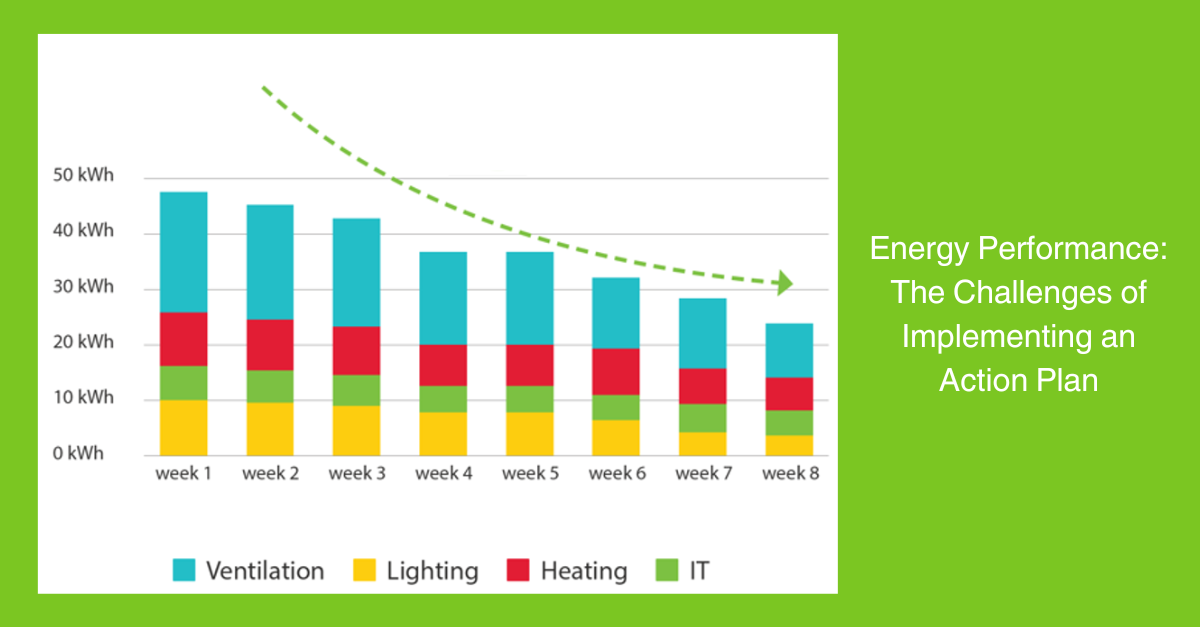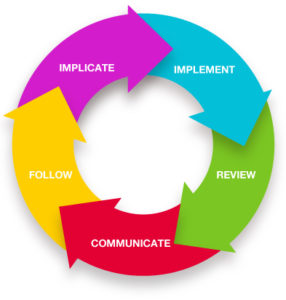
Energy Performance: The Challenges of Implementing an Action Plan
An energy audit or assessment aims to define and plan action plans to better control energy consumption and thus improve a building’s energy performance. It garners significant attention from stakeholders in energy performance. While a diagnosis of energy consumption is indeed the first step in an energy performance approach, is it sufficient?
Indeed, most of the time, actions identified following an energy audit are not implemented. Given this observation, the question that arises is:
What are the challenges of implementing an energy performance action plan?
Assuming that the actions recommended in the audit are relevant, meaning they are feasible and profitable, and thus it is in the building manager’s best interest to implement them, let’s review the challenges in converting the potential for savings into tangible actions.
1- Engaging Stakeholders to Move to Action
The stakeholders capable of implementing the actions are not necessarily the same individuals who are involved in the energy performance process. The first challenge, therefore, is to involve these stakeholders in the process so that they can contribute to the implementation of the action plan. For this, the use of a simple, clear, and educational tool is important to enable them to understand the stakes and get involved in the process.
When operations are outsourced, establishing a win-win approach, such as an Energy Performance Contract, helps align interests towards the implementation and monitoring of energy performance actions. A tool for measuring consumption is also important in the implementation of this type of approach to develop a balanced energy commitment.
2- Verify the Effective Implementation of Each Action
Once the decision to implement an action is made, it is essential to validate the actual impact of this action on consumption. A typical example is updating the control instructions on the Building Management System (BMS) supervisor, but if the communication between the supervisor and the controller is no longer functional, the instructions may not be applied at the end of the chain, thus rendering the implementation of the action ineffective.
3- Quantify and Communicate the Real Energy Performance Gains Obtained
After implementing the actions, communicating the gains achieved is essential to legitimise the approach to stakeholders. A simple, clear, and educational presentation is key to highlighting the results of the approach to actors such as decision-makers, sustainable development contacts, and peers.
Furthermore, communicating the results obtained within the operating teams helps to establish a positive dynamic in the operation relationship by capitalising on the success of the approach.
4- Key Points of Vigilance to Keep in Mind
However, certain points of vigilance should be kept in mind when observing the results of the implementation of an energy performance action plan:
– Separate Influencing Variables
Factors such as temperature or occupancy can impact consumption. It’s important to understand their impact and to properly separate uses to comprehend the results of an action plan. Otherwise, the risk is investing in an action whose effect is nullified by an external variable. For example, the savings generated by switching to LED lighting can be offset by increased heating consumption during a harsher winter. This type of situation can lead to significant misunderstandings about the real effectiveness of action plans.
– Define the Scope for Each Stakeholder
Several actors are involved in the life of a building, whether for its operation or the execution of work. In the energy approach, it is important to establish which action generates which result, especially in the context of contracts with energy commitments and financial stakes.
5- Follow Up on Actions and Sustain Savings
Once these actions are implemented with a real and quantified impact, the next step is to project towards a more sustainable approach of daily action monitoring in the life of the building to sustain savings and avoid any deviations.
To go further:
More articles are available on our blog:
How to save energy in commercial buildings in the UK?
Dassault Systèmes & Smart Impulse: From Energy Optimisation to ISO 50 001



